What Is Taffeta Fabric? A Complete Guide to Properties of Taffeta, How Taffeta Is Made, and Where It Comes From
When you ask, “What is taffeta fabric?” You’re asking about a textile...
From an infant to a toddler to a child’s first bed, blankets are gradually employed at various life stages. However, different types of blankets may also be used for other things. They can be used as ornamental throws or as bedspreads to keep you warm on chilly nights. Any bedroom would benefit from having a blanket because it makes beds cozier and more comfortable. What is a blanket made of and which size blanket is best for you, given the range of different types of blanket material and sizes available on the market?
There are no set blanket sizes, and the materials used can range from thick and heavy wool to light and airy cotton. There are many possibilities, making picking the different types of blankets a fascinating shopping experience.
Finding the right one from different kinds of blankets will depend on the space it’s covering or what it’s being used for, as the size of a blanket might determine how beneficial it is.

The dimensions of a twin blanket are 65 by 90 inches, making them suitable for twin beds and twin XL mattress sizes. You need twin blankets if your youngster has grown into a teen and needs a larger blanket.

The most typical type of blanket chart that can be seen in any home is this one. For double or full beds, two blankets are appropriate. After a long day at the office, this size blanket will make the greatest comforter. You may snuggle a youngster under this blanket as well, and it will be a wonderful alternative for an adult. The blanket for a double bed is 85 inches by 90 inches in size.

90 × 90 or 100 inches, is the size of a queen blanket. The queen-size mattresses fit perfectly. However, a double or full bed can easily be covered with a queen-sized blanket.

The king-size blankets are the largest available. A king-sized blanket is 108 by 90 to 100 inches. The normal king-size and California (Western) king-size beds are perfectly compatible with king-size blankets. The standard blanket length is often four inches greater than the California king size. If you wish to sleep alongside your lover, child, or fur baby, you must purchase a blanket of this size.
With the aid of this dimension guide, you now know the size of every blanket. We anticipate that choosing will be less difficult than before. Choosing the proper blanket size is crucial since it guarantees a nice and comfortable night’s sleep. In addition, having knowledge of the appropriate blanket sizes for your child will help you make wise blanket selections if you are a new parent.
Some specialty blankets aren’t just utilized to cover the mattress because there are so many different sizes available. For instance, the Neonatal Intensive Care Unit’s special premie blanket is designed only for premature infants (NICU). On the other hand, wheelchair users, hospital patients, and others like them can use a lapghan blanket that is 36 inches wide and 48 inches long.
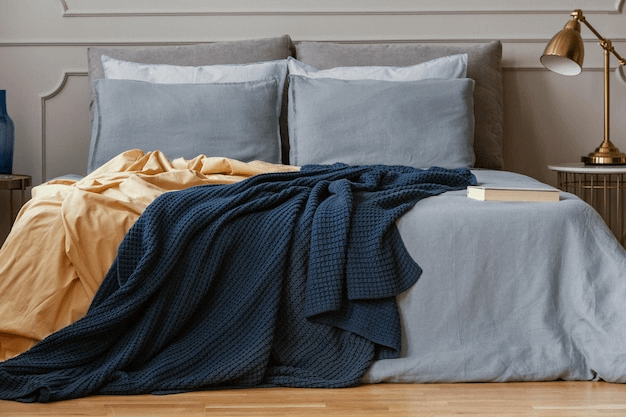
What are the different types of blankets? Size, material, and production techniques for blankets can vary. Both handcrafted and machine-made items exist. A few are well-known due to their history or brand name. Each one serves the same function, which is to give warmth.
There isn’t a single solution that is the best option. In addition to the many varieties of blankets, there are different types of blanket material with pictures.
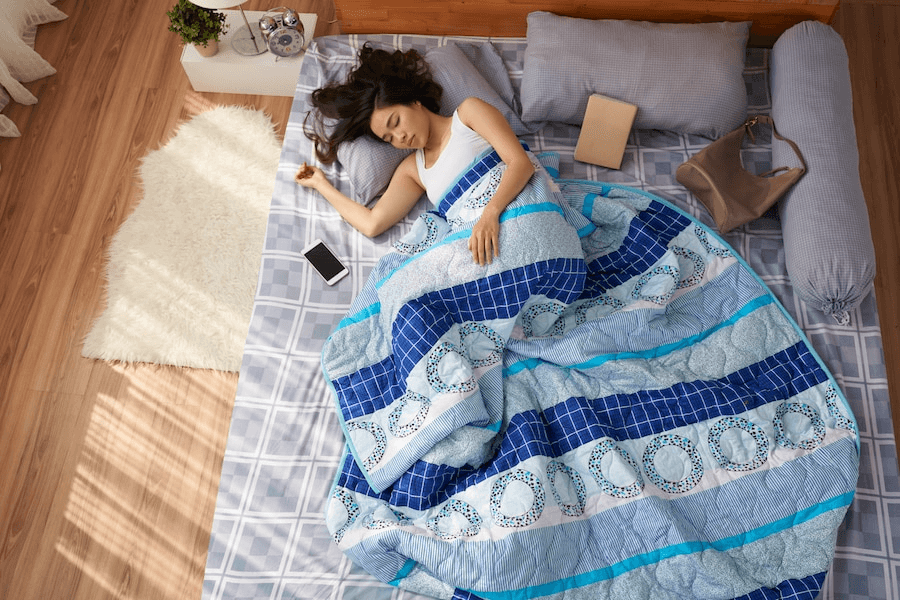
One of the most common blanket types is the comforter, which is constructed from two huge fabrics and filled with cozy materials like cotton, polyfill, or feathers. The fabric used on both the inside and outside of the blanket determines how soft it will be. Because of this, the most common blankets will have an exterior made of cotton or a polyester blend.

In comparison to a comforter, a duvet might be the thicker, warmer, and softest type of blanket material. The fact that duvets are slipped in and out of covers, whereas comforters are typically worn without one, is one of the fundamental distinctions. Think of a duvet as a huge pillow since it typically has an outer shell.
Any bed size can use a duvet blanket because they come in all mattress sizes. Since you simply need to sometimes replace the cover, cleaning is simple. It is easier to match a duvet cover to your bedsheets because they are available in a variety of colors, patterns, and styles. The ideal type of blanket for winter is one of the coziest.
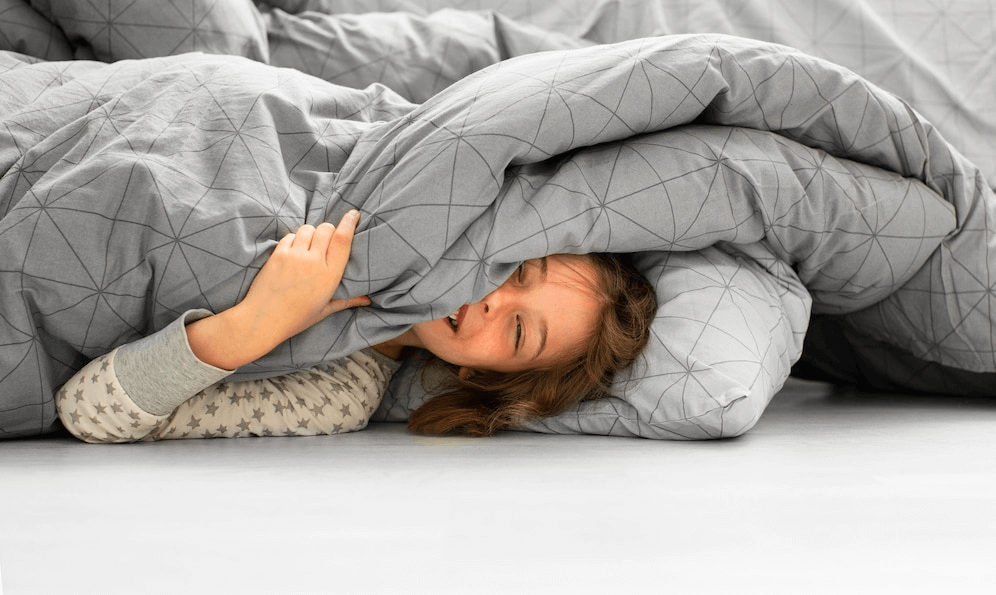
Cotton blankets are one of the most commonly used types of blankets to make in homes. They are perfect for anyone with skin difficulties because they are lightweight, incredibly easy to carry, and hypoallergenic. This is a perfect choice if you’re seeking a blanket that requires little upkeep.
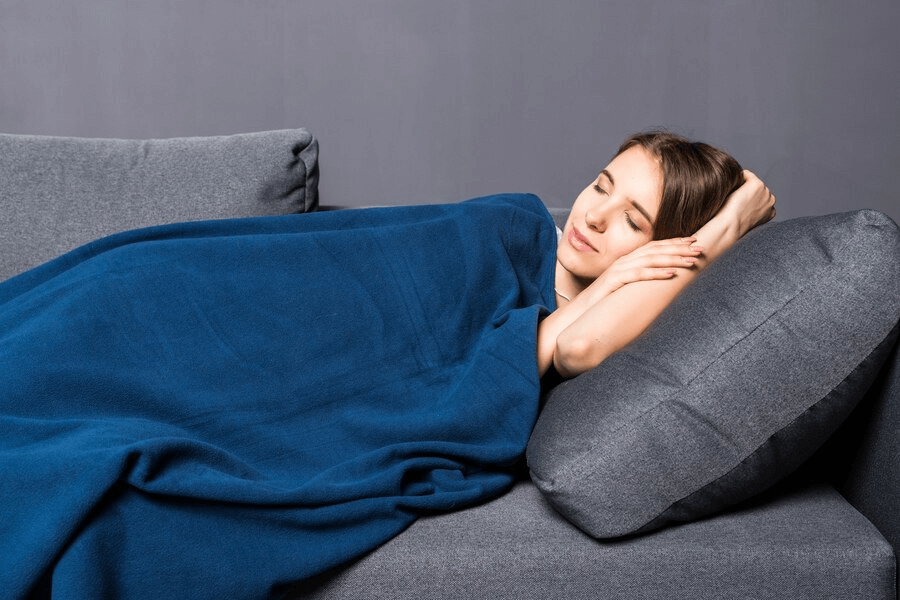
A microfiber blanket is smoother, softer, and hygienically cleaner than any other textile fabric type of blanket since it is made of a variety of different fiber kinds. The materials frequently consist of nylon, rayon, and polyester. It usually consists of a blanket made of incredibly fine polyester. Its extremely fine weave prevents dust particles from penetrating or entering, making it hygienically clean and secure for use.
This blanket is incredibly cozy and plush. It is perfect for allergy patients and won’t irritate their skin.

Gravity blankets, sometimes known as weighted blankets, are filled with heavy objects like glass or plastic beads. These blankets provide a calming effect on the user. Anyone who wants to enhance sleep by eliminating tossing and turning will find this method, which applies the Deep Touch Pressure principles, to be excellent.
Occupational therapists help their patients by using weighted blankets. The issues of anxiety, depression, autism, and sensory processing disorder are elevated in this situation.
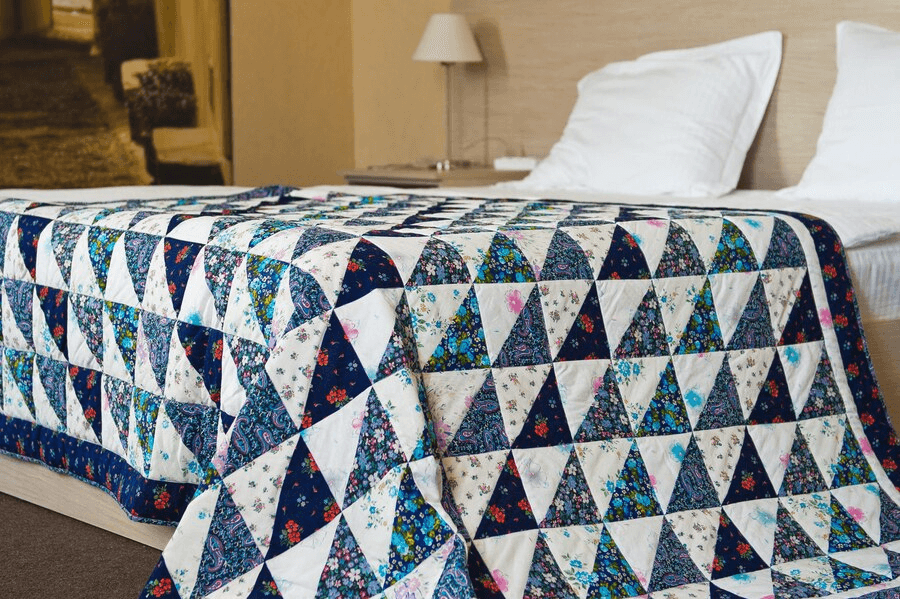
The front, middle, and back are the three layers that make up a quilt. The fabric serves as the outermost and innermost layers. The filler, which lies in the middle of the sandwich, is composed of materials like cotton, wool, or polyester. The distinctive stitching pattern and the little pieces of fabric (typically colorful) are utilized to make a quilt unique.
Cotton is used to make quilts, which can also be worn in the spring or summer. They add a funky touch to your decor because they come in a variety of sizes, designs, patterns, and fabrics.

Small blankets called throws can be used as decoration or as a light cover while you relax. It is portable and convenient to use, and it is typically seen on a sofa or bed.
Throw blankets can be produced from a variety of materials, although they are typically knit or woven with light materials. They can be used for picnics and provide your home with a splash of color or texture.
It can be complicated, so before we get into the realm of blankets, let’s clarify what a blanket, comforter, and duvet are. Wool, cotton, fleece, polyester, and other fibers are all acceptable materials for the top layer of a blanket. Both a comforter and a duvet use fillings to create their puffy and thick forms. The filling is typically made of down or a down substitute, such as synthetic fibers.
A duvet has two layers—an insert and a cover—whereas a comforter is one piece with the stuffing sewn inside of it. The insert serves as the duvet’s stuffing. The contents of both types of bedding make them excellent heat insulators.
Regarding blankets, they are necessary to keep a person’s body warm. The high thermal conductivity of blankets helps to retain the heat that comes from the human body while it is at rest. For added coziness, a blanket can be positioned underneath or on top of a duvet or comforter.

However, blankets are more complicated than just the usual sizes. Choosing from the different types of fabric for your blankets is another important step. There are several popular blanket fabrics, each with unique selling points:
What type of blanket is the warmest? The ability of a blanket’s fabric to retain heat directly correlates with how warm it stays! Two distinct blanket fabric types work particularly well for this. The two types of warm blankets are wool and fleece.

One of the bulkiest and warmest types of blanket material you can get is wool. Compared to cotton, it is thicker and warmer. Additionally, it is more water-resistant. Wool naturally possesses incredible heat-retention qualities and can easily wick away moisture. This is a result of wool’s capacity to hold heat inside its fibers. So it not only protects you from the chilly air, but it also aids in retaining body heat.
Wool is typically regarded as the best natural fabric for capturing and retaining warm air. Wool fibers do not lie flat against one another when viewed through a microscope. They naturally feature a “crimp” that keeps the wool cloth frizzy or kinky.
Even in wool fabrics that are extremely tightly woven, this results in innumerable air-gap gaps, which makes wool a top material for retaining heat.
Even after getting wet, wool is still useful. However, it takes some time for it to dry out. Wool wicks moisture away while also deflecting water. The overlapping scales of the fibers generate a hard outer layer that prevents liquid water from penetrating, which is why water beads up on the surface. However, water vapor is absorbed into the center of the wool strands, wicking away sweat.
How well a blanket retains your body heat and whether or not it keeps you warm when the weather turns cold depends on the materials it is made of. Nevertheless, even in extremely cold weather, you can stay warm and comfortable with these top winter blanket materials.

Synthetic fleece mimics the appearance and texture of wool. People who are allergic to wool and those with sensitive skin can thus take advantage of wool’s best qualities without concern. Additionally, it dries quickly and is soft, with moisture-wicking qualities that draw perspiration-induced moisture away from the body. This keeps you from getting too hot or too cold and lets you stay at a comfortable temperature.
Nonetheless, fleece and wool differ in a few ways. It can be a little lighter, for starters, and it’s not inherently antimicrobial or fireproof. Nevertheless, it dries more quickly than wool and won’t shrink if washed and dried.

The traditional blanket material is wool. It’s a versatile option for chilly winter nights because it’s thick and heavy without being stuffy. Its moisture-wicking qualities also mean that you won’t have to worry about perspiration-related dampness.
Additionally, wool naturally resists fire, so you can cuddle up by the fireplace or campfire with an extra degree of security.
Merino wool is yet another substitute material for fleece. Even though it’s still obtained from sheep, Merino sheep yield softer, thinner, non-itching fibers. Compared to conventional wool blankets, merino wool blankets are frequently more costly.
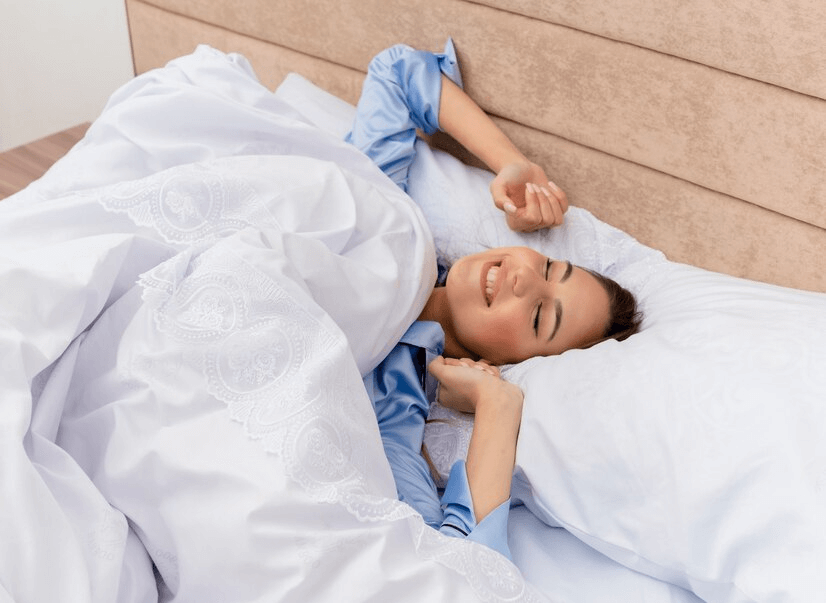
One of the most widely used materials is down due to its supple, lightweight, and breathable qualities. A piece of bedding’s fill power, or how much filling it contains, determines how warm a down comforter or blanket will be. In the winter, you want high fill power, ideally.
It might not be the best option for people with allergies or those seeking something made ethically because it’s frequently derived from the undercoat of waterfowl, including geese, ducks, and swans. You’ll also need to become proficient in cleaning down comforters to avoid causing harm to the delicate down.

To provide a calming and cozy feeling, weighted blankets are thick blankets packed with glass, metal, or poly beads. In the winter, weighted blankets—like the Layla Sleep Weighted Blanket—are an excellent option because they provide additional warmth. They’ll not only keep you warm, but they’ll also offer several benefits that may improve your general health.
There are several types of bed blanket sizes, and selecting the proper one depends on several variables, including the size and height of your bed and the intended use of the blanket. Do you want it to have the same effect as a bedspread and hang over the borders to just barely touch the floor? Alternatively, is it a wool underlay-style blanket that you place over your mattress to provide additional insulation while you sleep?
The majority of the time, you’ll want your blankets to cover the bed, drape over the sides, and offer warmth, or be light enough to make a difference but be so invisible that you hardly notice them. (Except, of course, for weighted blankets.)
There will be fewer drafts and fewer cold areas if your blanket sufficiently covers the edges of the bed.
Can You Use a Washing Machine to Wash Large Blankets?
A typical-sized washing machine can accommodate most blankets up to 20 pounds. If you’re unsure of your blanket’s exact weight, base your decision on the size of your washing machine; in washers with a capacity of at least 3.7 cubic feet, a king-size comforter can fit when cleaned alone.
Large blankets that won’t fit in a washing machine or those made of sensitive fabrics, like wool, should be hand washed in a bathtub using a gentle detergent.
What is the best blanket for all seasons?
For all seasons, a synthetic, lightweight fleece blanket is a great choice. It stays cozy and comfortable in milder weather and offers warmth in the winter.
How Many Blankets Should You Use When You Sleep?
With one or two blankets, you should be fine. One blanket can trap both your body heat and its warmth.

With the help of this guideline, you now understand how many types of blankets there are and their sizes. We anticipate that choosing will be simpler than in the past. The correct blanket should always be purchased to provide a nice and comfortable night’s sleep. And if you’re a first-time parent, knowing the right style and size of blanket for your child will help you make the right blanket purchases.